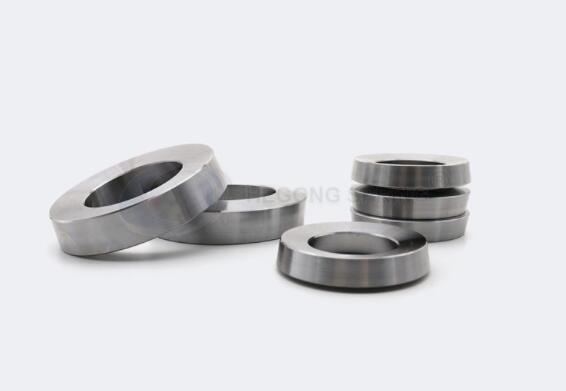A washer is a thin plate with a concentric hole that’s typically used to evenly distribute the load of a threaded fastener. Before a threaded fastener (such as a screw) is driven into a surface, a washer may be placed through the end for greater protection.
This prevents the bolt head and nut from scratching or indenting the surfaces of the two fastened parts, which could ultimately loosen the fastener. Additionally, driving a screw into wood might cause the wood to crack around the surface and a washer helps to reduce this from happening.

Several different types of washers are available to suit different applications. For example, vibration-isolating washers are designed to absorb vibrations. These components are made of a soft material, such as plastic or urethane. Occasionally, metal washers are also used as spacers to increase the distance between the parts being fastened.
Two of the most recognized washers are flat and spring washers. Let’s review each one.
The role of flat washers is to increase the size of a screw’s bearing surface area, reducing the surface pressure applied on the fastened object.
Looseness can result when the bearing surface sinks under the surface pressure, so using a flat washer diminishes the likelihood of this effect. This is particularly important if the contact area between a screw’s bearing surface and the object being fastened is small or if it’s made of a soft material, such as aluminum or resin.
Since flat washers are generally manufactured by pressing metal, one side has rounded corners and one side has burrs. There is no fixed rule about which side should be placed up or down but placing the burred side facing down is typically ideal, and especially if bearing surface pressure is a concern.
However, these burrs can also mark the surface of the fastened object during tightening so, for certain applications, it may be better to put the rounded side down to avoid plate peeling.
Spring (or locking) washers are made by cutting out part of a flat washer so that it can form a twisted shape. As a result, a spring action or an elastic force operates. Unlike flat washers, which are placed on both the bolt and nut side, spring washers only go on the nut side of the fastener to establish a bond.
A spring washer offers axial flexibility that’s intended to prevent loosening of the fastener with which it’s paired. However, the effectiveness is limited to only certain applications.
Originally, these washers were thought to be effective against looseness because of the increased frictional force provided by the cut part, which “bites” into the bearing surface. In theory, the sharp edges of the washer (which are also sometimes serrated) dig into the nut and mounting surface and prevent counter-clockwise-rotation or loosening. This would make these components ideal in high-vibration machinery.
For more information about washers, feel free to contact us.